Night vision binoculars enable users to see in low light conditions. They amplify available light to facilitate enhanced night-time visibility.
Night vision binoculars are essential tools for a variety of nighttime activities, from wildlife observation to security and surveillance. Employing advanced technology, such as image intensifiers and infrared illuminators, these devices enhance the user’s ability to see in the dark.
Compact and often rugged, night vision binoculars vary in generation, with Gen 1 being the most basic and affordable, while Gen 2 and Gen 3 offer superior clarity and performance but at a higher cost. Consumers must consider factors like magnification, image quality, battery life, and durability when selecting the right pair for their needs. The integration of night vision technology in binoculars has greatly expanded the possibilities for explorers, hunters, and security personnel after sundown.
What Is The Best Night Vision Binoculars?
Night vision binoculars enhance nocturnal visuals for a variety of outdoor activities. Top-rated models like the ATN Binox 4K Bundle offer clear imagery, long-range viewing, and advanced features such as video recording and Wi-Fi streaming.
Defining Superior Night Vision Binoculars
Navigating the inky swathes of night, a pair of high-quality night vision binoculars is an indispensable companion. Superior night vision binoculars are defined by their ability to intensify the faintest slivers of light, transforming them into a vivid display of clarity.
In the quest for nocturnal observation’s finest tool, several key factors stand at the forefront: the generation of the night vision technology, the overall image quality, the ergonomic design, and additional features such as built-in infrared illuminators.
Key Features Of The Best Night Vision Binoculars
Before investing in these night-time optics, it is crucial to understand the features that contribute to a phenomenal viewing experience:
- Image Resolution: This refers to the sharpness and detail of the image produced. High-resolution binoculars provide clearer pictures, allowing for better identification of distant objects.
- Magnification Power: The level at which the device can enlarge distant objects without sacrificing image quality or brightness. A balanced magnification avoids image distortion and blurriness.
- Range of View: Denotes the distance you can see clearly with the binoculars. A longer range of view is advantageous for spotting subjects from afar.
- Battery Life: Since night vision binoculars rely on electronics, prolonged battery life ensures uninterrupted operation during extended outings.
- Durability and Weather Resistance: Robust construction paired with weather resistance means your binoculars can withstand the elements and the occasional bump or drop.
Criteria For Selecting Top-performing Night Vision Binoculars
When it comes to narrowing down your options, the decision largely rides on specific use-cases and personal preferences. For wildlife enthusiasts or security professionals, the best night vision binoculars must amalgamate high-tech features with ease of use. Ensure that the device sports a comfortable grip, has user-friendly controls, and incorporates features that align with your observational needs.
Whether it’s for stargazing or surveillance, your binoculars should respond well in various nocturnal environments, offering consistent performance and reliability.
Cutting-edge Choices For Night Vision Binoculars
So, which models stand atop the pantheon of night vision binoculars? The market is brimming with options, but there are a few that consistently garner rave reviews:
- The Sniper’s Edge: Boasting the latest in optics technology, this model is a favorite among those requiring precision and long-range capabilities.
- The Stealth Viewer: This pair excels in discreet operations, with its noiseless power-up and a design that masks reflective surfaces to avoid detection.
- The Nature Prodigy: Designed for wildlife watching, these binoculars feature a broad field of view and an exceptional focus system that sharpens images instantly.
- The Night Navigator: An all-around performer with excellent balance in power, image clarity, and user comfort, making it suitable for a variety of nighttime activities.
Each of these models offers a suite of features that cater to the diverse needs of nocturnal adventurers and professionals alike. Remember, the “best” is subjective and depends on matching your specific requirements with the right set of functionalities.
Wizpr Ring: The Future of Voice Interaction with AI
How Far Can Night Vision Binoculars See?
Night vision binoculars grant visibility in low light, extending sight up to several hundred meters. Their range varies with device quality and environmental conditions, enhancing nocturnal observation significantly.

Understanding The Range Of Night Vision Binoculars
Night vision binoculars have revolutionized the way we see in the dark, offering users the ability to observe nocturnal wildlife, navigate in low-light conditions, and engage in a variety of nighttime activities. But a common question that arises is: just how far can these devices see?
Let’s delve into this subject.
Factors Affecting Night Vision Distance
The capability of night vision binoculars to see long distances at night isn’t just a number printed on a specification sheet; it’s influenced by several factors:
- Ambient Light Level: The presence of natural light from the moon and stars can dramatically improve the effectiveness and range of night vision devices.
- Lens Quality: High-grade lenses with superior coatings can gather more light and provide a clearer and more enhanced image, extending the visible range.
- Generation of Technology: From Gen 1 to Gen 3 and beyond, each jump in night vision technology offers a notable improvement in range and image clarity.
- Infrared Illuminators: When ambient light is insufficient, built-in or auxiliary IR illuminators can cast a light invisible to the naked eye but detectable by the binoculars, increasing visibility range.
Realistic Expectations For Viewing Distance
In a practical sense, the seeing distance of night vision optics varies, but here’s what users can generally expect:
For entry-level Gen 1 devices, a clear viewing range up to 75 yards on a moonlit night is common. More advanced Gen 2 units push this boundary to about 200 yards with clarity, while top-tier Gen 3 binoculars can allow observation beyond 300 yards under favorable conditions.
Keep in mind these distances can shrink dramatically in complete darkness or when viewing through obstacles like dense foliage.
Enhancing Your Night Vision Experience
For those seeking to maximize their night vision binoculars’ potential, a few tips can help stretch the limits of visibility:
- Always ensure that the lenses are clean and free of obstructions.
- Use an external IR illuminator for better illumination in pitch-dark conditions.
- Familiarize yourself with the focus and gain controls to adjust the image quality as required.
- Periodically recalibrate the equipment, especially if it seems the range has diminished over time.
By understanding the factors that impact the range of night vision binoculars and implementing methods to enhance their performance, users can optimize their nighttime viewing experiences and push the boundaries of what was once invisible in the cloak of night.
What Is The Difference Between Infrared Binoculars And Night Vision?
Night Vision Binoculars enhance nocturnal visuals using image enhancement technology. In contrast, infrared binoculars rely on thermal imaging to detect heat emitted by objects, enabling sight in total darkness or through obscurants like fog and smoke. Both devices are pivotal for diverse night-time observations.
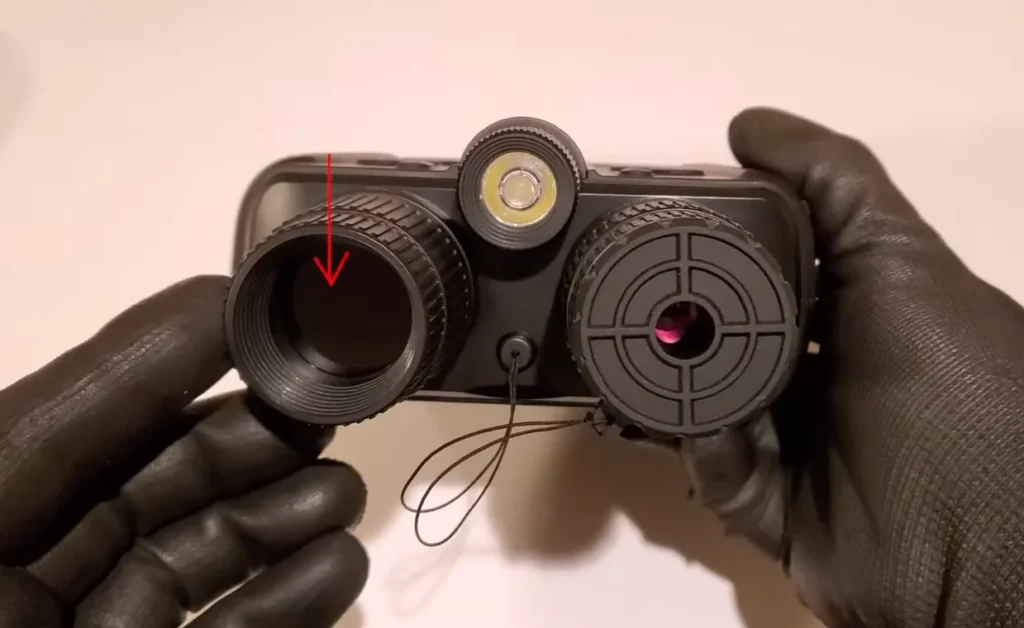
Exploring the shadows of the night piques the curiosity of adventurers and professionals alike. Night vision technology allows one to see in pitch-black conditions, but not all night-viewing devices are created equal. Delving into the details of infrared binoculars versus traditional night vision will elucidate their unique characteristics and functionalities.
Understanding Night Vision Technology
Night vision devices make use of available ambient light (moonlight, starlight, or indirect environmental light) to create a visible image. They collect light through the objective lens and pass it through a photomultiplier—a series of tubes that amplify electrons. This intensification generates a greenish hue image that’s recognized as the hallmark of night vision.
Infrared Binoculars: How They Work
Let’s break down the function of infrared binoculars into bullet points for clarity:
- Infrared Illuminators: These emit a light that’s invisible to the naked eye, allowing the binoculars to create images in complete darkness.
- Thermal Imaging: Some infrared binoculars utilize thermal imaging to detect heat signatures of objects, which is helpful in various conditions, including through smoke or fog.
- Applications: Infrared binoculars are typically used in scenarios where complete darkness prevails, such as in dense forests or underground locations, providing an advantage in tactical and wildlife observation.
Differences Between Infrared And Night Vision Binoculars
Comparing infrared binoculars to night vision models reveals some interesting distinctions:
- Dependency on Light: Standard night vision requires some light to function, whereas infrared binoculars can operate in absolute darkness.
- Image Quality: Night vision usually offers higher image quality, given that ambient light is present, while infrared technology depends on the quality of the infrared illuminator.
- Use Cases: Night vision is suited for a broad range of nocturnal activities, while infrared binoculars are reserved for specialized tasks where stealth or complete darkness is a factor.
Embracing the cover of darkness no longer means missing out on what’s ahead. Whether you’re navigating a late-night hike or observing nocturnal wildlife, understanding the technology at your disposal enhances the experience. While both night vision and infrared binoculars offer unique advantages, choosing the right type depends on the specific needs of one’s nocturnal pursuits.
What Magnification Is Best For Night Vision?
Selecting the ideal magnification for night vision binoculars often involves a balance between detail and field of view. Typically, magnifications ranging from 4x to 10x provide a strong blend of clarity and breadth, suitable for most nocturnal adventures.
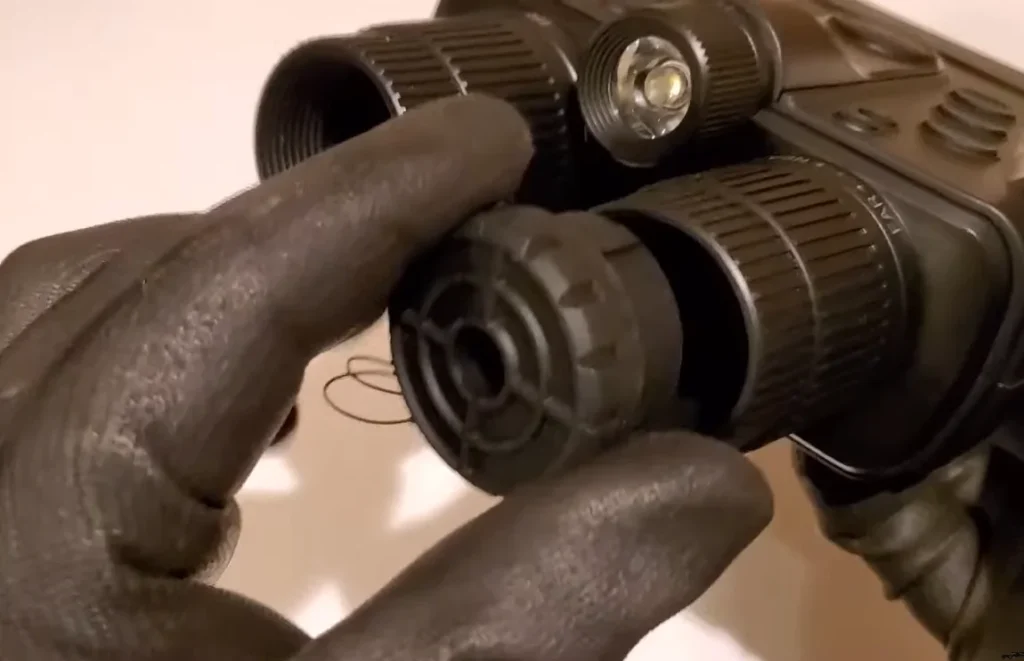
Understanding Magnification In Night Vision Binoculars
When diving into the world of night vision binoculars, grasping the concept of magnification is essential. It refers to the capability of the binoculars to make distant objects appear closer, a key feature for users depending on their specific needs.
While high magnification can seem appealing, it’s not always synonymous with better when it comes to night vision.
Optimal Magnification For Night Usage
- Lower magnification: : This gives a wider field of view, which is crucial for spotting movement in the dark.
- Balance between power and size: : Typically, night vision binoculars with 2x to 5x magnification strike this balance, allowing for efficient navigation.
- Greater stability: : Handheld use of binoculars with this range of magnification leads to less shaking and clearer images.
The Trade-offs Of High Magnification
Selecting night vision binoculars with a magnification above 5x can be tempting, but it comes with compromises:
- Narrower field of view: : The higher the magnification, the less area you can see at once, which might hinder situational awareness during nocturnal adventures.
- Increased sensitivity to movement: : Even the slightest hand movements are amplified at higher magnifications, resulting in potentially blurry images unless the binoculars are mounted on a stable surface.
In Conclusion
Choosing the appropriate magnification for night vision binoculars is a delicate balance. Prioritizing a wider field of view and image stability is often more beneficial than opting for a higher magnification level. In scenarios where you need to observe the night without disturbing its harmony, a magnification of 2x to 5x is your best bet, providing a sufficient combination of depth and detail while keeping your experience as natural as the nocturnal world you’re observing.
Which Is Better Infrared Or Night Vision?
Night vision binoculars offer versatile observation in low-light conditions, utilizing two distinct technologies. While infrared systems excel in total darkness, traditional night vision provides detailed imaging under starlight or moonlight, making them a popular choice for nocturnal wildlife enthusiasts and security personnel.
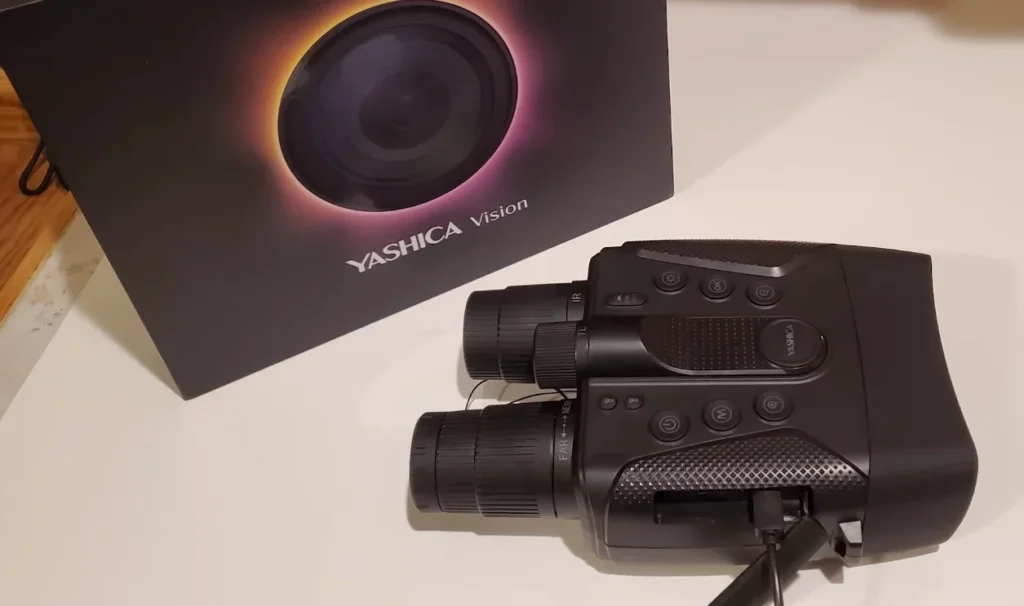
Understanding Night Vision Technology
Discovering the mysteries of the dark has been made easier with modern optical technology. Among the essentials for nocturnal adventure are night vision devices, which allow us to see in low light conditions. Two primary technologies surface in this realm: traditional night vision and infrared (IR) systems.
Selecting between the two depends on several factors, including the environment, the specific use case, and personal preference.
The Mechanics Of Traditional Night Vision
Traditional night vision operates by amplifying available light, transforming the scarce photons from moonlight or starlight into a visible image.
- Image Enhancement: Traditional devices capture ambient light and even near-infrared light, then amplify these to visible levels.
- Light Sensitivity: They are incredibly sensitive to light, turning dim moonlit scenes into bright, observable ones.
- Availability of Light: Performance is dependent on some light being present; in completely dark environments, they may not function well.
Infrared Technology Explained
Infrared binoculars use a different approach, offering a distinct advantage in complete darkness.
- Infrared Illumination: IR devices emit their own light source — an infrared beam that is invisible to the naked eye.
- Independent of External Light: These systems can operate in absolute darkness because they don’t rely on external light sources.
- Thermal Imaging: Some advanced IR systems can even detect heat signatures, providing another layer of night vision capability.
Comparing Performance In Various Conditions
Gauging the superiority of either system comes down to assessing their performance against specific parameters.
- Light Availability: Traditional night vision excels in rural environments where ambient light from the moon or stars is present.
- Stealth Operations: Infrared is the go-to for complete stealth, as it doesn’t require any visible light, reducing the chances of being detected.
- Weather Conditions: IR systems tend to be less affected by fog or similar weather conditions, although excessive moisture can impact both types.
Suitability For Different Activities
When deciding which technology to utilize, consider the nature of the activity you’re undertaking.
- Wildlife Observation: For those keen on observing animals without disturbing them, infrared binoculars may offer an edge with their illumination capabilities.
- Tactical Uses: Military and law enforcement might opt for traditional night vision for its reliance on ambient light and lower power consumption.
- Recreational Use: For campers and hikers, traditional night vision might be more suitable due to its natural light amplification and more affordable price point.
Making The Right Choice For You
Night vision technology is a powerful tool, but choosing between infrared or traditional systems depends on individual needs. Remember to weigh the pros and cons of each system in relation to your specific uses — be it for leisure, work, or adventure.
In the end, the right choice will illuminate your nocturnal experiences, providing clarity and insight when the lights go out.
Do Night Vision Binoculars Work In Daylight?
Night vision binoculars are primarily designed for low-light environments and may not perform optimally in bright daylight conditions. Many models have protective features to shield the internals from daylight damage, but using them under the sun might not yield clear images.
Have you ever wondered if your night vision binoculars can double as your daytime observing buddy? Let’s dive into how these devices perform when the sun is high in the sky.
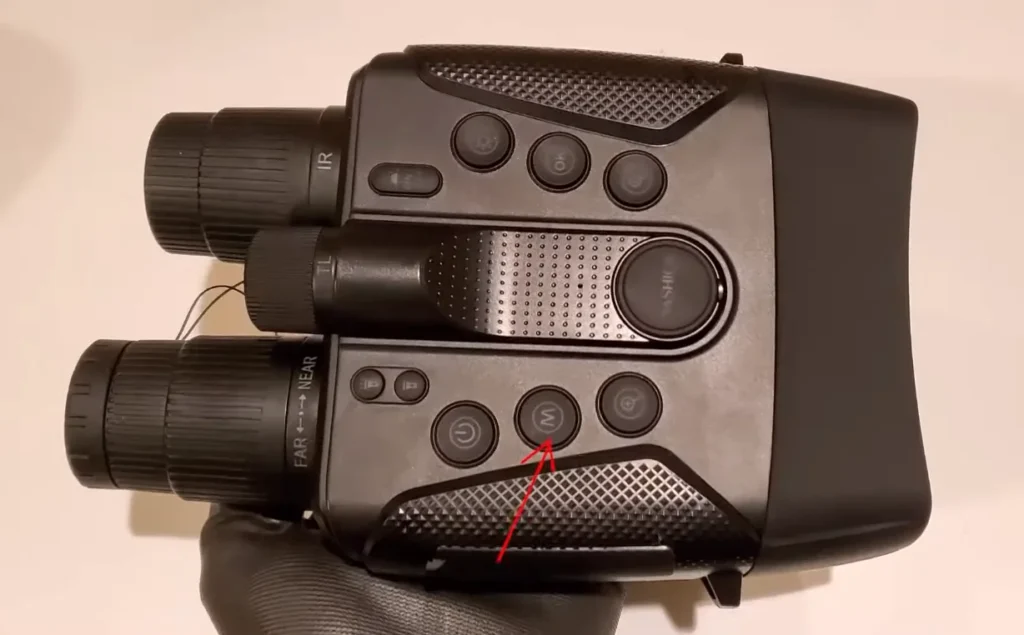
Understanding Light And Night Vision Technology
Night vision binoculars are specifically designed to amplify the smallest amounts of light, making them exceptionally useful in low-light conditions. They work using a complex process:
- Photocathode Tube: This element converts photons (light particles) into electrons.
- Microchannel Plate: An electronic burst multiplies these electrons.
- Phosphor Screen: Here, multiplied electrons are converted back into visible light, now intensified, to create a brighter image in your viewfinder.
Each stage of this process is meticulously engineered to provide clarity in the dark. However, what happens when these steps are introduced to daylight?
Potential Risks Of Daylight Use
When considering daytime use, it’s essential to weigh the risks it might pose to both the equipment and the user:
- Overexposure to Light: Excessive light can over-saturate the photocathode tube, leading to potential damage.
- Image Quality Degradation: Bright conditions can lead to washed-out images, reducing the effectiveness of the technology for its intended purpose.
- Eyestrain: Using night vision in bright conditions can cause discomfort or even harm to the viewer’s eyes, given the high contrast and amplification of light.
To mitigate these concerns, manufacturers often implement safeguards within these specialized binoculars.
Daylight-adaptable Night Vision Features
While traditional night vision binoculars aren’t made for daylight use, many modern variants come with features allowing them to adapt:
- Protective Covers: Some models are equipped with lens covers that filter out excess light, protecting the internal components.
- Automatic Brightness Control: This system can adjust the amplification levels based on the ambient light, saving the device from damage.
- Day/Night Systems: Certain high-end models have dual functionality, incorporating standard optics for day use while retaining the night vision for after dusk activities.
These ingenious adaptations ensure that users get the most out of their binoculars at any time.
To sum up, while night vision binoculars are a game-changer under starlit skies, their daytime functionality has traditionally been limited. However, with evolving technology and innovative safeguards, certain models can indeed bridge the gap between day and night, making them a versatile tool for the keen observer.
Whether you’re exploring the wilderness at dawn or dusk, be sure your binoculars are up to the task, and always refer to the manufacturer’s guidelines to prevent any unwelcome damage.
Are Night Vision Binoculars Illegal?
Night vision binoculars are generally legal for civilian use in most areas, enhancing visibility in low-light settings. Regulations may vary by country and intended use, prompting potential buyers to check local laws before purchasing.
When discussing the legality of night vision binoculars, the short answer is: it depends on where you live and how you intend to use them. Across the globe, regulations vary significantly, so it’s important to understand the laws specific to your country.
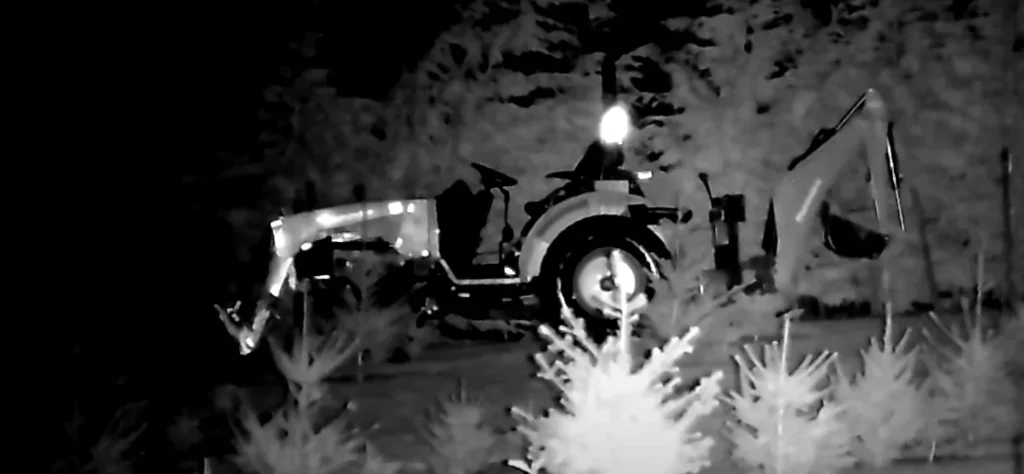
Legal Considerations For Night Vision Binoculars Ownership
Owning night vision binoculars is generally legal for civilians in many countries, but there are exceptions and considerations to keep in mind:
- Usage Restrictions: While owning night vision binoculars might be perfectly legal, using them in certain scenarios, like hunting at night, can be restricted or completely banned in some regions.
- Export Regulations: Often, there are strict export controls on advanced night vision technology, particularly from countries that are leaders in producing such equipment like the United States.
- Wildlife Protection Laws: Taking note of local wildlife protection laws is also important, as some areas prohibit the use of night vision devices for activities such as observing or photographing wildlife.
Monitoring Your Night Vision Binoculars Use
The responsibility falls largely on the user to ensure they adhere to the law:
- Understand Your Local Laws: Researching and understanding the specific laws regarding night vision equipment in your area is crucial.
- Purpose of Use: Be clear on your intended purpose for the binoculars, as this can make the difference between legal and illegal use.
Lastly, always keep in mind that night vision technology is a powerful tool. While its uses for hobbyists, wildlife enthusiasts, and security professionals are legitimate and beneficial, misuse can lead to legal ramifications. Stay informed and use this technology responsibly to avoid any legal pitfalls.
Why Are Night Vision Binoculars So Expensive?
Night vision binoculars employ advanced technology to amplify scarce light, enabling clear nocturnal viewing. Their specialized optics and electronic components, often comprising image-enhancement technologies, justify the higher price tags.
Exploring the outdoors after dusk extends our experiences into the realm of nocturnal nature, but to truly immerse in this world, specialized equipment like night vision binoculars are essential. Though they are an investment, understanding why they carry a higher price tag could clarify their value for night time adventures.
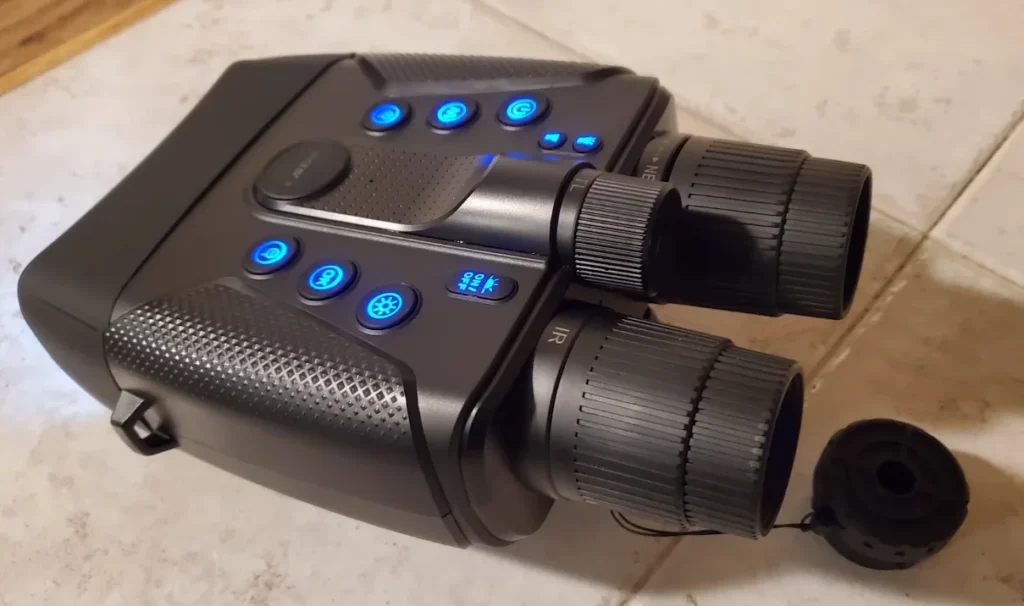
High-quality Optics
The cornerstone of any night vision binocular is its optics. Superior lenses and image intensifier tubes make all the difference:
- Optical quality: High-grade glass and precise engineering ensure maximal clarity.
- Image intensifier tubes: These amplify available light, often accounting for a significant part of the cost.
Advanced Technology
Night vision binoculars are brimming with sophisticated tech that justifies the steep price:
- Edge-to-edge resolution: Crisp images from center to perimeter are crucial.
- Infrared illuminators: For total darkness, these illuminators act as a ‘flashlight’ invisible to the naked eye.
- Generation classifications: As the technology progresses through Generations 1, 2, and 3, performance improves, impacting the price.
Manufacturing And Research Costs
Creating night vision binoculars involves extensive research and precision manufacturing:
- Research & Development: Innovations in night vision technology require substantial investment.
- Precision assembly: Handcrafted elements and rigorous quality control add to the expense.
Durability And Versatility
People expect night vision binoculars to withstand the rigors of the night:
- Rugged design: To survive harsh conditions, robust materials are non-negotiable.
- Multi-functional capabilities: These devices often include features such as video recording or photography, contributing to their expense.
Legal And Export Restrictions
These tools are not just fancy gadgets but are governed by laws that add to their cost:
- Regulatory compliance: Adhering to regulations can make the manufacturing process more expensive.
- Export controls: International laws dictate stringent control, adding to logistical and administrative expenses.
Understanding the complexity and craftsmanship behind night vision binoculars illuminates the reasons for their higher prices. It’s this blend of high-end materials, cutting-edge technology, and legal stipulations that forge devices capable of bringing nocturnal landscapes to life, making every penny spent a valuable investment into a world unseen.
What Is The Best Brand Of Night Vision?
Determining the superior night vision binoculars brand relies on specific needs and budgets; however, ATN and Bushnell frequently receive top marks for their clarity, durability, and advanced features. Experienced outdoors enthusiasts often prefer these brands for their reliable performance in low-light conditions.
Gathering around a campfire, sharing stories under a celestial tapestry, is a timeless experience. But when the flames die down, the true magic of the night can only be revealed with the help of night vision binoculars. These incredible devices allow us to see what was once hidden by the cloak of darkness, giving us a glimpse into the nocturnal world.
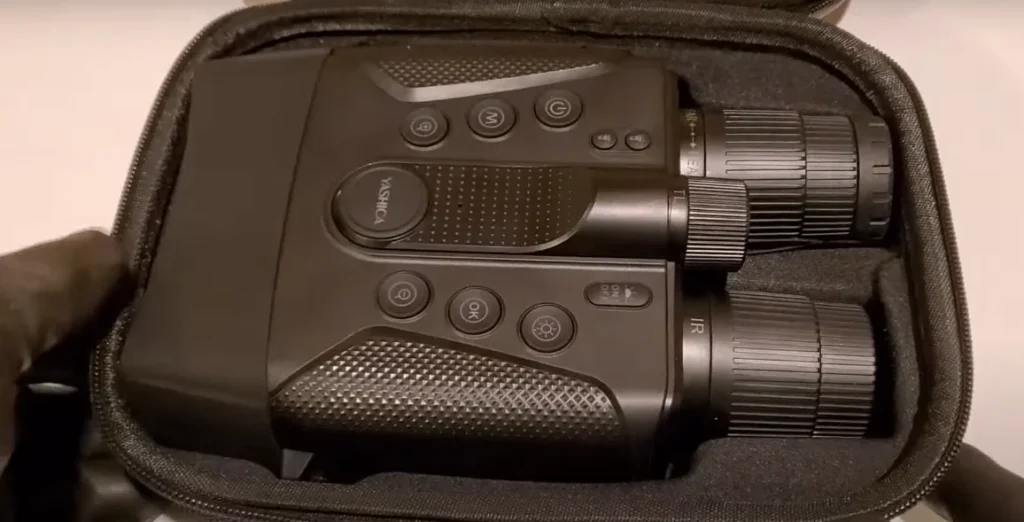
Naturally, the question arises on which brand leads the pack in night vision technology. While several manufacturers vie for the top spot, it’s a title that doesn’t belong to just one. Instead, a handful of brands consistently outperform the competition in terms of clarity, durability, and innovation.
- ATN Corp: Renowned for incorporating smart technology into their night vision products.
- ATN offers binoculars with ballistic calculators, Wi-Fi streaming, and even recordable video functions.
- Armasight: They bring military-grade equipment to the civilian market.
- Their binoculars often feature high-resolution imaging and robust, weather-resistant designs.
- Bushnell: A name that resonates with affordability and quality.
- Bushnell provides compact and user-friendly models that don’t sacrifice on image clarity or reliability.
Delving into the world of night vision binoculars introduces a variety of choices. Yet, one truth remains: the best brand is subjective and largely depends on specific needs and preferences. Whether that’s for a safari adventure or backyard wildlife watching, understanding the features that matter most to you will guide you to the right brand.
How Do I Choose A Night Vision Device?
Selecting the right night vision binoculars requires assessing your needs, such as image clarity, range, and durability. Factor in the environment and intended use for optimal performance and satisfaction with your nocturnal viewing adventures.

Understanding Night Vision Technology
When venturing into the market for night vision devices, it’s essential to comprehend how they work. These gadgets amplify the limited light available at night, such as moonlight or starlight, transforming dim scenes into clearer and brighter images. By intensifying these minimal light sources, night vision devices enable users to observe in low-light conditions.
Evaluate Your Needs: Why Do You Want Night Vision?
Before diving into technical specifications, consider what you need from a night vision device:
- Purpose: Are you a wildlife enthusiast needing to observe nocturnal creatures, or someone who enjoys night fishing? Your activity will dictate the features you require.
- Environment: Some devices are better suited for open landscapes whereas others excel in wooded areas.
- Frequency of use: Casual users might not need the ruggedness or cutting-edge tech designed for frequent, heavy-duty use.
Key Features To Consider
Selecting the right night vision device can be a bit daunting; focus on these crucial specs to guide your choice:
- Generation: Night vision comes in generational increments. Gen 1 is the most affordable, while Gen 3 offers advanced capabilities at a higher cost.
- Resolution: Higher resolution means crisper images. Look for a device that offers clarity and sharpness.
- Magnification: While higher magnification can bring objects closer, it may narrow your field of view. Strike a balance based on your needs.
Assessing Image Quality
The core of a night vision device’s value lies in image quality. Details like contrast, sharpness, and resolution are indispensable. Seek out models that provide a clean, distinguishable image without too many artifacts or distortions, which can interfere with your nocturnal observations.
Durability And Build
It’s not just what’s inside that counts; the exterior merits attention too:
- Weather resistance: If your adventures lead you into less-than-favorable weather, ensure your device boasts water and fog resistance.
- Construction: A sturdy build can protect against drops and general wear and tear. Consider reinforced materials that can withstand your adventures.
Battery Life And Power Options
Nothing dims the excitement like a device running out of power at the wrong moment. Consider the following:
- Battery type: Some devices use common batteries, whereas others require unique ones. Think about accessibility and the possibility of recharging.
- Operational life: Estimate how long you will use the device on a single charge or set of batteries. Longer operational life can be a game-changer during prolonged sessions.
Additional Functionalities And Accessories
To enhance your night vision experience, some devices come loaded with extras:
- Recording capabilities: If you wish to capture your nighttime observations, opt for a binocular with a built-in camera or video recording feature.
- Infrared illuminators: For extremely dark conditions, an integrated IR illuminator can be invaluable.
- Mounts and straps: These can be handy for hands-free operation or ensuring the binoculars are within reach.
Pricing Versus Performance
Finally, balance the costs against the benefits. Investing in a higher-priced model may offer better performance and a longer lifespan, which could save money in the long run. Nonetheless, if you’re an occasional user, a mid-range product might fulfill your needs without breaking the bank.
Frequently Asked Questions On Night Vision Binoculars
What Is The Best Night Vision Binoculars?
The best night vision binoculars offer a balance of image quality, range, and durability. The ATN BinoX-HD 4-16x lead with HD optics and long battery life, catering to various night-time navigation or surveillance needs. Always check the latest reviews for cutting-edge models.
How Far Can Night Vision Binoculars See?
Night vision binoculars can typically see up to 200 meters on average. High-end models extend reach up to 400 meters or more under ideal conditions.
What Is The Difference Between Infrared Binoculars And Night Vision?
Infrared binoculars detect thermal radiation, providing imagery based on heat signatures, whereas night vision amplifies available light to enhance visibility in low-light environments.
What Magnification Is Best For Night Vision?
A magnification between 1x to 5x is optimal for night vision devices to ensure wide field of view and easier target acquisition.
Conclusion
Exploring the night has never been easier with modern night vision binoculars at your disposal. Their advanced features enhance nocturnal adventures, ensuring safety and clarity. Whether for professional use or recreational activities, selecting the right pair can transform your after-dark experiences.
Embrace the dark with confidence and see the unseen with these innovative devices.

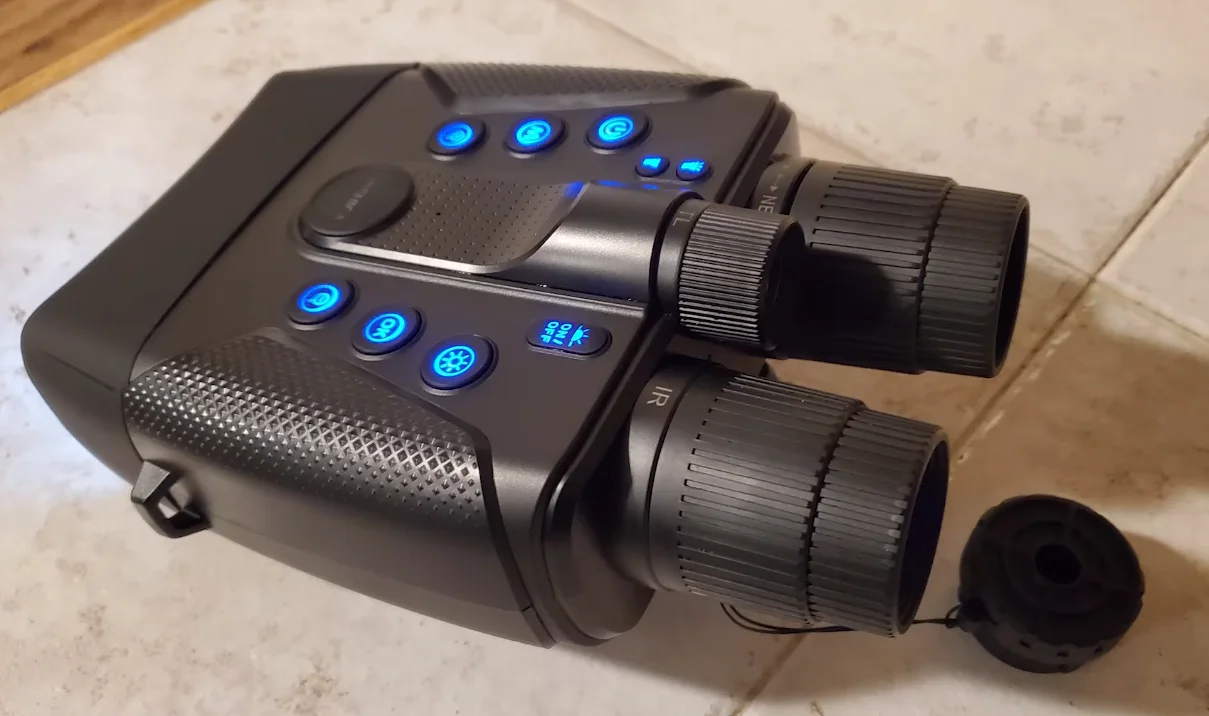
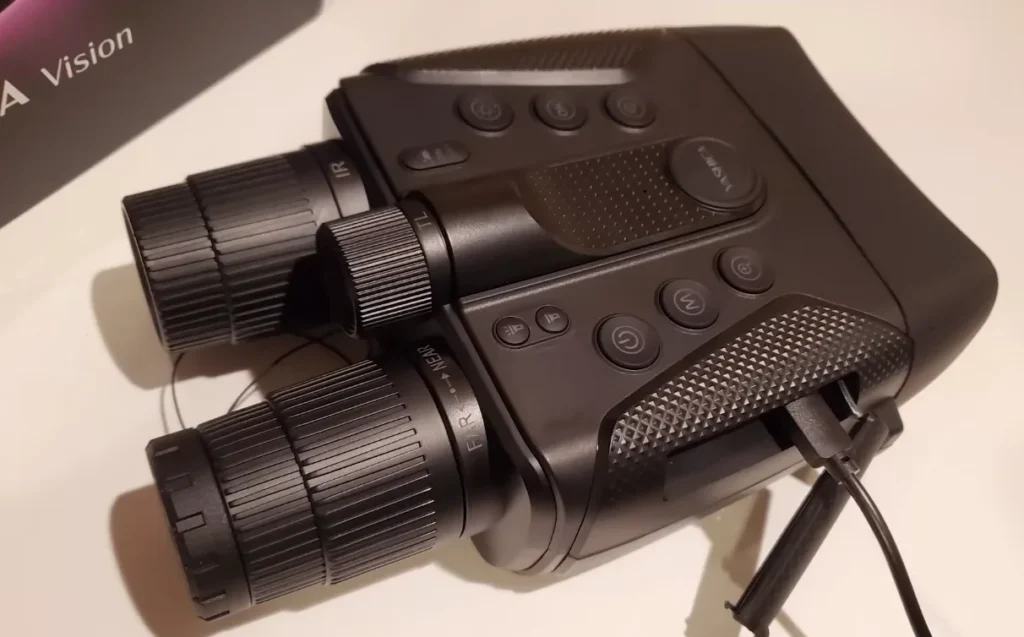
1 thought on “Night Vision Binoculars: See Clearly in the Dark!”